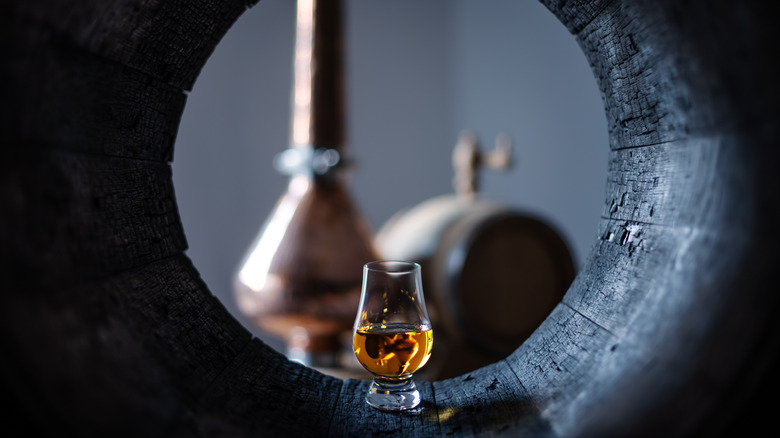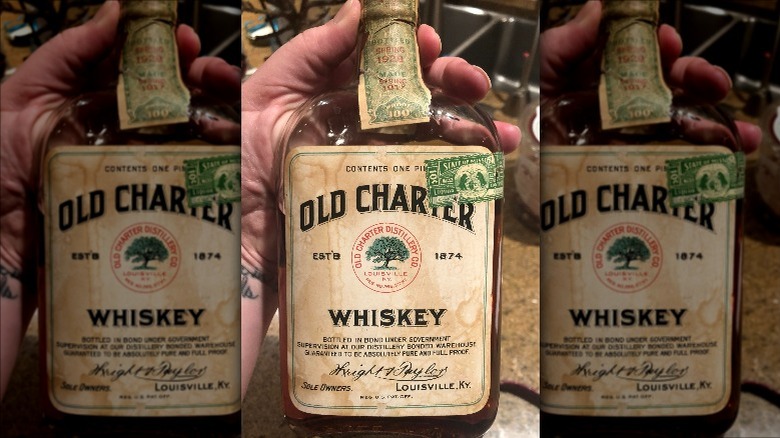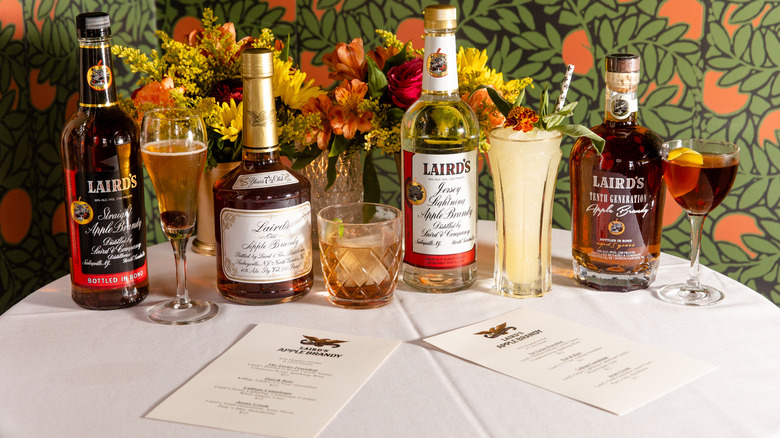How America's Oldest Distilleries Survived Through Prohibition
When it comes to the oldest continuously operating distilleries in the United States, you'd assume prohibition enforced a hard reset. Indeed, from 1920 to 1933, it was illegal to make, transport, or sell alcoholic drinks in America (via Encyclopedia Britannica). So, while it was technically still legal to consume boozy beverages, distilling them was all but impossible ... at least, on paper.
Per History, this temperance movement actually dates back to the early 1800s, stemming from a resurgence of religious calls for "perfectionism" in society. States had experimented with that idea throughout the 19th century. Yet, it was the 20th century's Great War that first brought about a nationwide prohibition, saving grain for war rations. That was a slippery slope, and the 18th Amendment was put into place soon after. As President Herbert Hoover put it, this measure was an "experiment, noble in motive." Folks truly believed sobriety would make the country more harmonious and productive.
Cue bootlegging, smuggling, speakeasies, and all the organized crime that goes along with them. The economy suffered, as states weren't benefitting from liquor taxes, restaurants weren't profiting from alcohol sales, and thousands died annually from bad booze. Such woes and the need for a stiff drink when the Great Depression hit convinced Americans that maybe prohibition wasn't such a good idea after all. At first, President Franklin D. Roosevelt made it so beers and wines could be produced again, and later that same year, prohibition was repealed altogether. Distilleries that closed quickly reopened.
Distillers had medical licenses
While there were plenty of illegal ways to obtain moonshine during prohibition, some searched for legal loopholes. According to Smithsonian Magazine, farmers were allowed to make wine so that religious leaders could use the drink during spiritual services. As thanks, the government let these agrarian vintners drink their own product. For the hard stuff, though, one had to see a physician.
Per Encyclopedia Britannica, during the 13 years of nationwide temperance, drugstores sold millions of bottles of medicinal whiskey to those who had a prescription. Doctors could prescribe alcohol for ailments like cancer, depression, and indigestion. Theoretically, this was a legitimate practice, with medics carrying out examinations and making diagnoses, but in reality, a lot of pharmacists were just making extra money from those willing to pay for the privilege.
Demand necessitates supply. Thus, a handful of distilleries were issued licenses that let them sell any whiskey they had already made pre-prohibition, as well as aging inventory bought from other, shuttering distilleries (via Style Blueprint). These distilleries included American Medicinal Spirits, A. Ph. Stitzel, Frankfort Distilleries, Glenore, Old Forester, and Schenley. Chris Morris, the master distiller at present-day Old Forester, believes such licenses were given out based on reputation rather than any specific requirements. Then, when supplies started to run out in 1929, the government let those six distilleries produce millions more gallons of whiskey a year all in the name of keeping folks healthy.
Some of the oldest distilleries in America are still in business
For distilleries, becoming a medical provider during prohibition was an ingenious way to not lose their streaks. Have such long-lasting records endured to the modern day? Per Style Blueprint, A. Ph. Stitzel, Glenore, and Schenley all ended up being acquired by Diageo, a business founded in 1997 that now owns brands like Captain Morgan and Don Julio. Meanwhile, American Medicinal Spirits has become a part of Jim Beam, which began making bourbon in 18th century Virginia. Similarly, Frankfort Distilleries was bought by Four Roses Bourbon, which started in 19th century Kentucky; notably, Four Roses obtained Frankfort in 1922, two years after prohibition started, so this other distillery got in on the medicinal whiskey craze through a sort of technicality. Last but certainly not least, Old Forester still exists on its own, under the same name, honoring the legacy of its 1870 founding.
One honorable mention goes to Laird & Company, America's oldest distillery (though not the longest continuously operated one) according to New Jersey Monthly. Back in 1717, the Laird family distillery was established, and even George Washington wrote about its "cyder spirits" and at one point asked the Lairds for their recipe. Sadly, Laird & Company didn't continue distilling throughout prohibition, so its streak was broken, but the venture survived by producing apple cider and applesauce instead. Nevertheless, Laird & Company's story is a prime example of how distilleries that didn't get a medical license during tough times still managed to weather the temperate storm.


